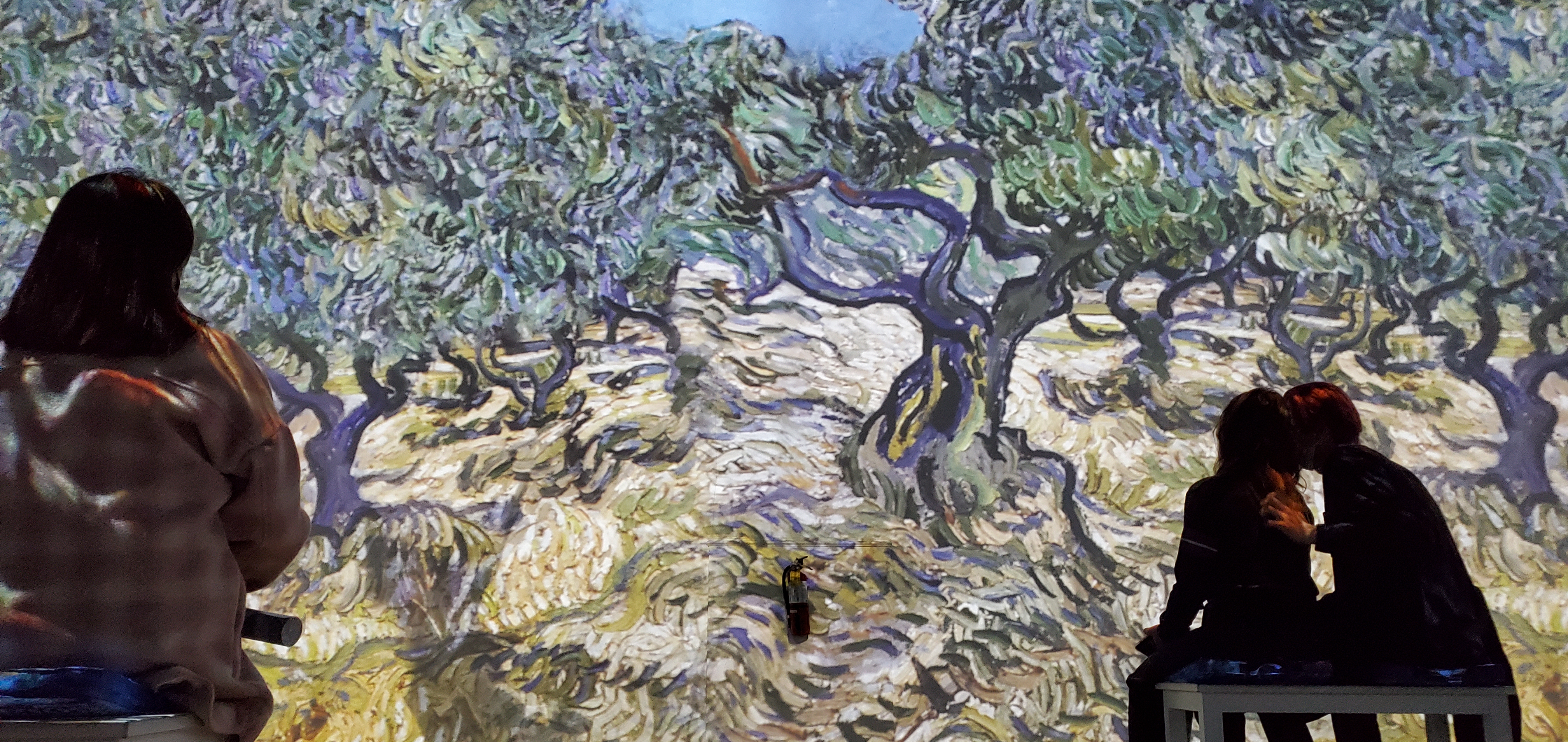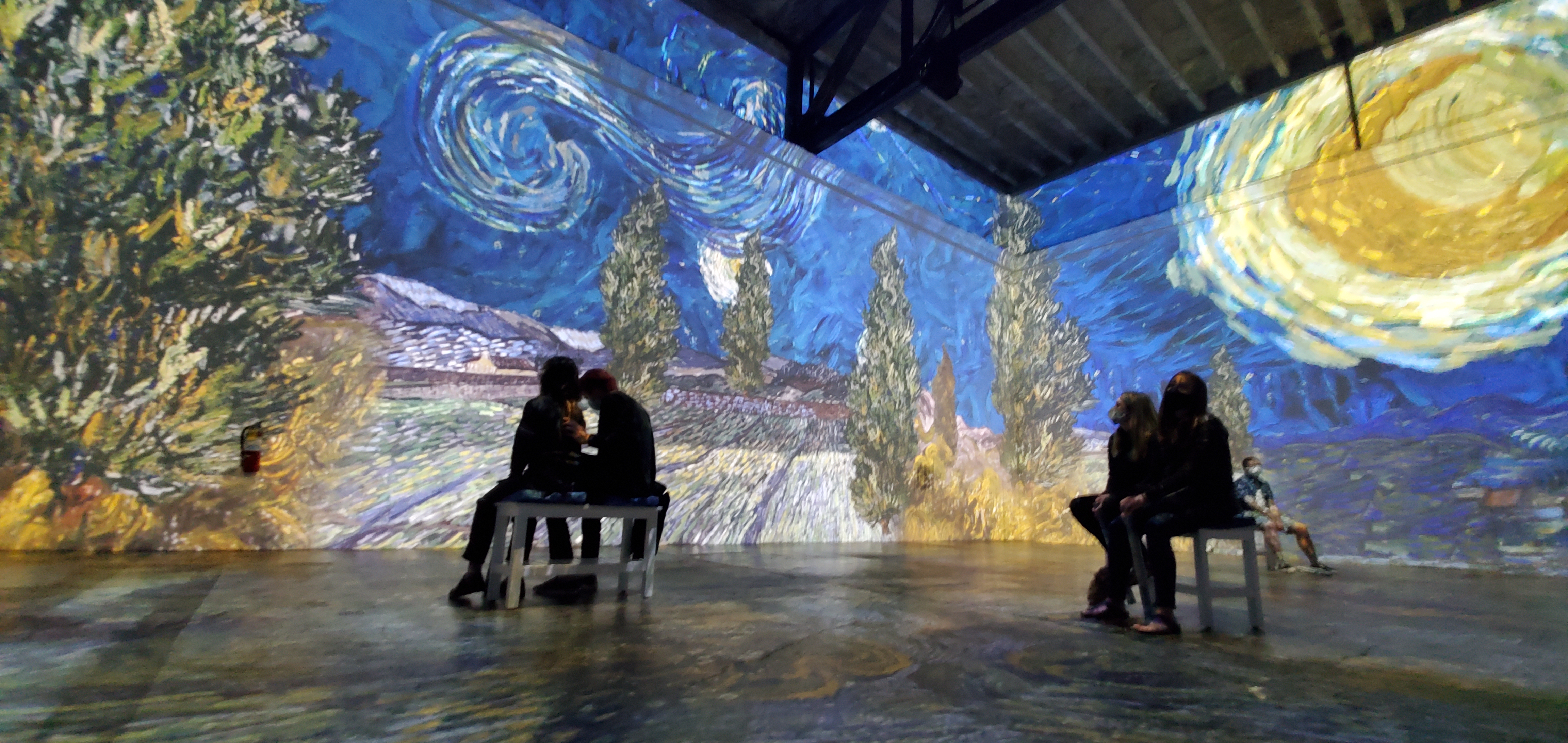I was standing in the middle of a large space. The hangar was filled with people, and they were chatting, laughing, and clearly having a good time. I don’t know why, but I couldn’t make myself feel any joy. The dark room, the sad music, and the moving pictures made my head spin. I landed on a beanbag chair and took a deep breath.
I don’t remember any particular details from the Van Gogh immersive experience. All I can recall is this overwhelming sadness that I experienced when seeing his great works come to life. Every painting, every brushstroke is a cry from an artist who was never understood.

He was a man of passion. When a new idea got into his head, he would become so possessed by it he would renounce his old career, his old beliefs, and sometimes even his old friends and family. He put all of his energy first into trying to become a pastor, then an art dealer, and finally an artist. First, admiring the rough and simple life of the peasants in Borinage. Then, celebrating Japanese prints and trying to create his own versions of them. Finally, seeing the light of the stars at night in a way nobody had even seen it before.
And every time he was mocked and ostracized. When he attended art classes in Paris, meticulous drawing was simply not his style. His classmates said he would “attack” the canvas instead of carefully studying the model. Later, in Arles, accompanied by Gauguin, he noticed how easy it was for his friend to persuade models to sit for him. Which for Vincent was always a constant struggle…
Who doesn’t like Van Gogh today? We use his sunflowers when we want to brighten our days. We admire the mysterious twirls of his Starry Night. But a whole lifetime of being a social pariah pushed this man into the depths of self-doubt. Did you know that fame almost came to him at the end of his life? In 1889, while Vincent was confined to a mental asylum, an art critic Albert Aurier celebrated his work in his article, calling Van Gogh “exciting and powerful”, “profound and complex” and his art “unbelievably dazzling”. Finally, his work was recognized! But years and years of being rejected, Van Gogh didn’t think he couldn’t handle this unexpected fame. After reading the flattering article, he wrote to his brother, “I do not paint like that. My back is not broad enough to carry such an undertaking” (from “Van Gogh. The Life” by Steven Naifeh and Gregory White Smith, p. 807).

That is what I felt standing in a dark space with the moving works by Van Gogh projected onto the walls. An intense sensation of seeing the world through a completely different set of eyes. Seeing the world where the light cast by golden stars makes the air around them so magical that it starts to twirl. Cypresses come to life and try to reach the sky with their serpent-like arms. Like devilish monsters, cafes beckon you to come inside their scarlet red mouths and never let you come back out into the dark and cold night.
I saw the world through the eyes of this genius artist, but I also felt overwhelming sadness, because I knew that he wasn’t able to share his view with his contemporaries. After a lifetime of being considered crazy and finally committing himself into a mental asylum, the only place where he could feel safe, he must have been torn between loathing the world that treated him so harshly and hating himself for never being able to fit in.
Somehow, when I found myself in the midst of these moving images, I thought I knew what Van Gogh was feeling, because I, too, experienced rejection. Just like Van Gogh, I have at different points in my life felt like a failure, like I didn’t fit in. But it also made me understand that great results can sometimes be born out of hurtful experiences, just like Van Gogh’s timeless works of art were.
So, if you also feel misunderstood, mocked, or pushed away, know that you are not alone. The greatest among us once lived through that, too.
Olga Cardamone is a tour guide and art historian from St. Petersburg, Russia. Her boutique travel agency, Eagle Travel, has been providing tours to Russia with great emphasis on local culture since 2014. Want to explore Russia right now? Sign up for her email newsletter and immediately receive a free virtual tour.

